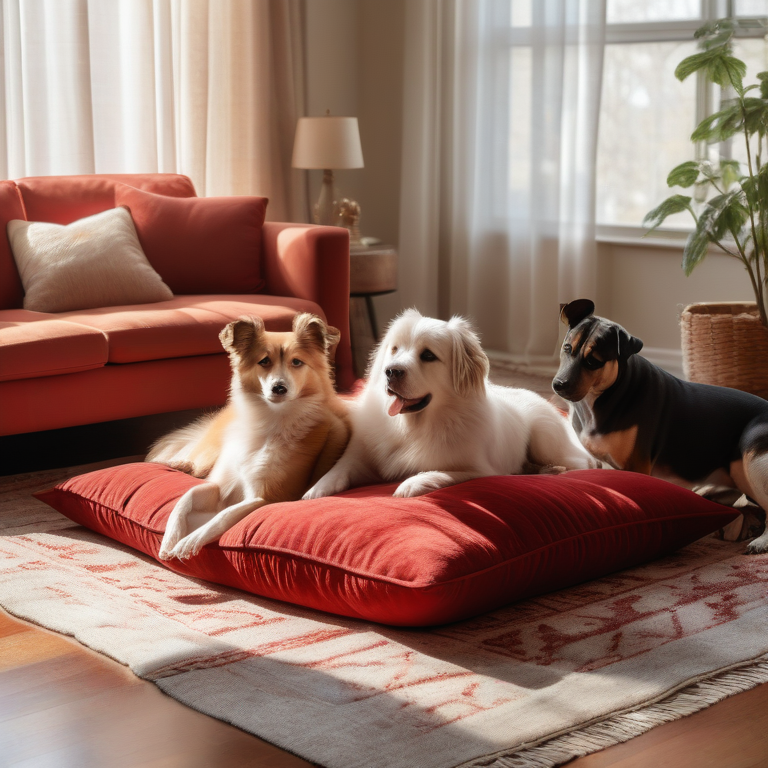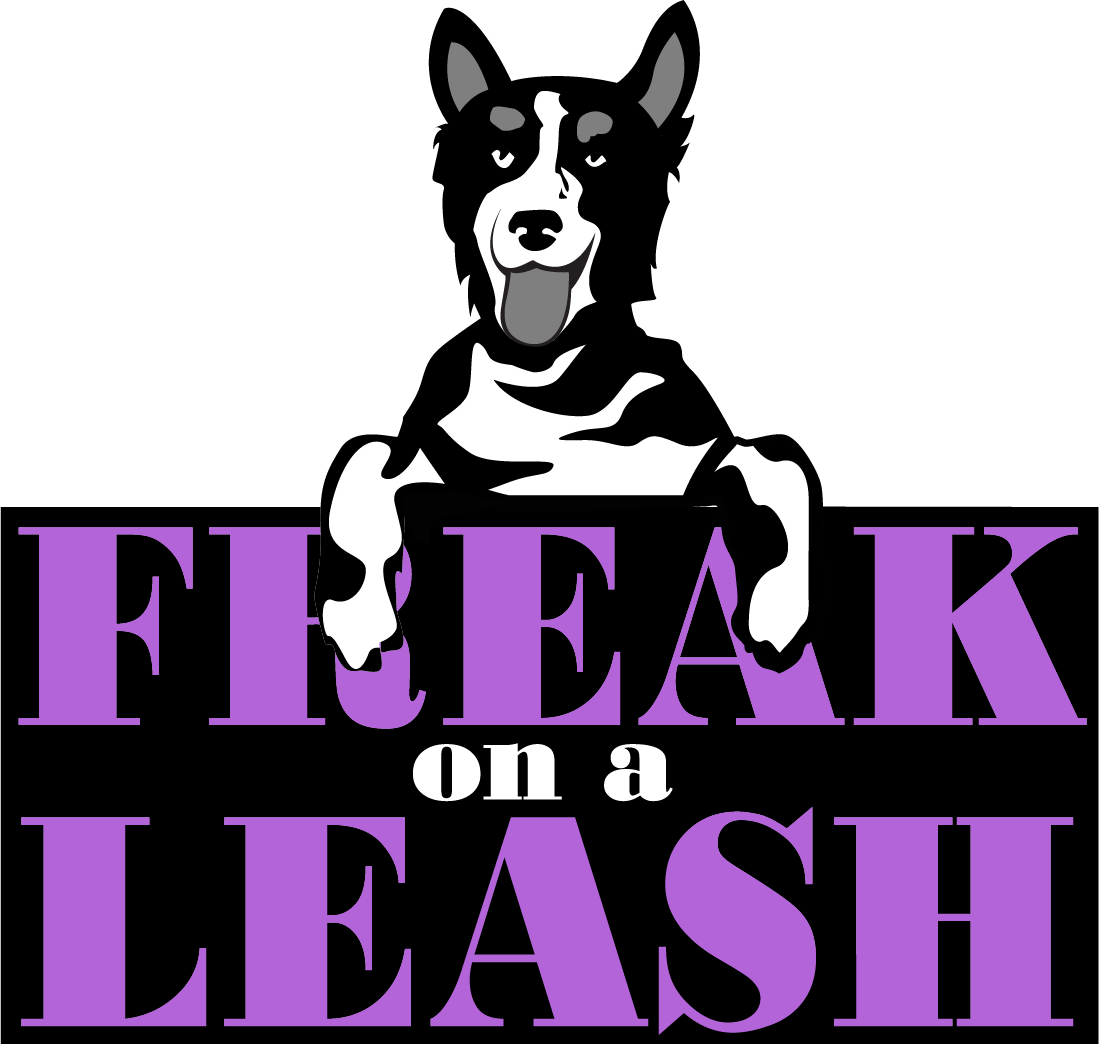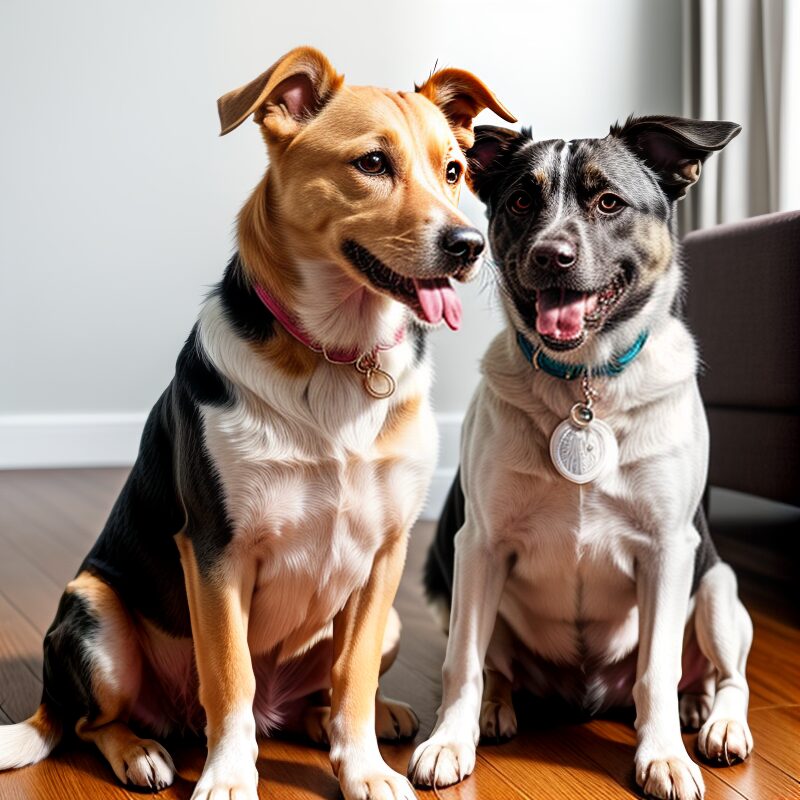
Key Highlights
- Understanding each of your dogs needs is crucial for managing multi-dog households.
- Preparation is key: proactively ensure sufficient space, resources, and individual attention for each dog.
- Establishing clear rules, boundaries, and routines helps minimize conflict and promotes harmony.
- Socialization, both within the household and with dogs outside the home, can be paramount for peaceful coexistence.
- Recognizing early signs of aggression and seeking professional help when needed can prevent escalation.
Introduction
Bringing a new dog home is exciting. But for dog owners who want to expand their canine family, it is important to think carefully about this change. To help a new pet fit in with resident dogs, you’ll need to plan well, understand dog behavior, and be proactive about making a calm space for everyone.
Understanding Multi-Dog Households
Having multiple dogs can sound great, like having a big happy family. But in reality, it can take extra thought and effort to make it work. Dogs have unique personalities, likes, and ways of communicating, just as people do. Knowing these facts is the first step to preventing conflicts and creating a peaceful household. Factors like a dog’s age, breed, personality, and past experiences will affect how they get along. It is our job, as their caretakers, to help them build good relationships.
The Dynamics of Multi-Dog Homes
To effectively manage a home with many dogs, it is important to know how they communicate. By watching a dog’s small signs like tail positions, ear positions, and learning to read their mood, we can see how they feel and what might bother them. It is also essential to create a calm and predictable environment in the house. Try to avoid tense moments and big changes that might cause fear or aggression. When dogs feel relaxed and safe, it helps them get along better.
Keep in mind that fostering a peaceful multi-dog home can take time. It can require patience, consistency, and a readiness to learn and grow with our dogs, but this process goes a long way in building a happy space for everyone.
Common Challenges in Multi-Dog Households
One common problem in homes with multiple dogs is fighting over resources, especially food and toys. To help reduce these issues set up separate feeding areas, separate places for sleeping, and structured playtimes. Management tools like crates, baby gates, and leashes can keep dogs apart when needed. This develops safe spaces and helps stop any possible conflicts.
Good training is also very important. Teaching simple cues like “leave it,” “wait,” and “place” allow for control during a tense moment. Being able to reliable cue these behaviors can help calm down situations before they escalate.
Preparing Your Home for Multiple Dogs
Before bringing another dog into your home, it is important to get your space ready. Advance preparation provide a better chance for everything go smoothly. Make sure there are specific places for each dog to eat, rest and sleep undisrupted, and play. Think about each dog’s personality. Create areas that fit their individual needs. For example, you might want to provide a comfy spot for a cuddly dog or a fun place for a lively dog to play.
Creating Individual Spaces for Peaceful Coexistence
Dogs are social animals, but they also need their own space. Set up specific areas in your home where each dog can go to have some alone time. These can be separate rooms, crates, or comfy corners with each dog’s favorite bed or blanket. Giving each dog a space for time alone can reduce stress and stop arguments that might happen as a result of not getting breaks from one another. Separate spaces also helps calm down tendencies toward territorial behavior. It gives each dog security and control over their surroundings. This is especially important when there is a lot of stress at home, or when a new pet joins your home.
Guide to Managing Multi-Dog Households
Managing a home with multiple dogs is not always easy. It does not often just happen by chance. Imagine you are the parent of your dogs. It is your job to set rules and limits for a happy home. Like raising children, this will require intentionality in the form of clear communication, patience, and rules. By taking time to learn what each of your dog’s needs and employing good management strategies, you can help them live together peacefully.
Introduction and Step-by-Step Guide to Harmonious Living
Integrating a new dog into your home requires careful steps to make sure everyone adjusts well. Start by introducing the dogs slowly. Take them for a walk (or two) in a neutral place before letting them meet each other at home.
Using management tools is key, especially at the beginning. Crates, baby gates, and leashes provide safe spaces. They help to prevent conflict over things and allow controlled meetings between your dogs. Remember, these tools are for helping them, not for punishment. They help create a clear and organized space.
Set clear rules and boundaries right from the start. Address any bad behavior, like jumping, reaching for food on counters, or barking too much. Being consistent is very important. Keep these rules the same for all dogs in the home. This helps avoid any confusion or perceived inequalities.
Be patient. It can take time for a dog to settle in to a new home and find their place. Don’t be discouraged if things don’t go smoothly at first. With intentionality and time, you can create a happy home with multiple dogs.
Step 1: Establishing Clear Rules and Boundaries
The first step to having a happy home with many dogs is to set clear rules and boundaries. Think of this as creating the “house rules” that everyone must follow. House rules can include having specific areas for eating and sleeping and deciding what kind of play is allowed.
Have high expectations when it comes to good behavior, but be kind and understanding when sharing these expectations. Dogs do well in stable, predictable environments. By creating clear boundaries, you help them feel safe and secure in their home.
Training is important throughout your dog’s whole life, but is vital when you have a new dog. Make sure all the dogs in the home learn basic skills like sit, stay, come, and leave it and are able to respond to them in a variety of situations. Reliable skills help you and your dogs communicate better and stop any mix-ups that could cause problems. Joining an obedience training class can be very helpful. Training classes not only help with basic communication between you and your dog, but can also provide ways to manage them better.
Step 2: Implementing a Feeding Schedule to Avoid Conflicts
Feeding time can be a source of conflict in homes with many dogs. This is especially true if any dog in the home feels the need to guard their food. Having a set feeding routine can help reduce this problem.
If possible, feed your dogs in separate rooms or areas helps to curb food aggression. If the dogs do well eating close to each other, it is still good practice to make sure there is ample space between their bowls or feeding stations. This can help prevent any development territorial behavior.
Be sure humans in the home give them space as well. and refrain from doing anything that could make them more excited or anxious at meal time. For example, do not hover over them while they eat.
Step 3: Importance of Individual Attention and Training
While it’s great to shower your dogs with love, it is equally important to give each of them some regular attention one on one. This helps foster confidence and well being, and makes your bond stronger. Try to have daily playtime, short training sessions, or peaceful walks. This will provide designated time for you to focus on what each dog needs while giving opportunities to praise good behavior.
Obedience training can also go beyond basic cues. Get your dogs involved in fun activities that make them think and move. You can dabble in fun classes like agility, scent work, or tricks training, or use puzzle toys or interactive games. These activities help keep your dogs’ minds engaged and provide opportunities for them to use natural instincts. Regular exercise, whether physical or mental, also helps burn off extra energy. This reduces the chances of your dogs engaging in mischief out of boredom or fighting due to frustration.
Step 4: Managing Toys and Resources to Prevent Jealousy
Just like children, dogs can feel emotions akin to jealousy and a desire to protect their toys and resources. Supervise your dogs when they play, especially with new toys. Novelty is often exciting and can cause higher emotions, so make sure to monitor them with anything new. If you see any dog getting tense, get their focus on a different toy or start a new game. Keeping their playtime friendly and intervening into any tense behavior right away can stop any guarding over toys.Teaching every dog in the home the “drop it” cue is also a great way to quickly diffuse any tense behavior over toys.
Step 5: Routine Health Checks to Maintain Wellbeing
Maintain your dogs’ health by taking them to the veterinarian regularly. This helps to stop any health issues that might cause behavior problems. Make sure to schedule yearly checkups for each dog. This way, they will stay up-to-date on their vaccinations and get the care they need.
Also, watch for any changes in how your dog behaves, eats, or relieves itself. Any changes in these areas can be a sign of health problems. Ignoring subtle changes or taking a “wait and see” approach may lead to issues like aggression or anxiety. A healthy dog is a happy dog, and a happy dog typically gets along well with others. By focusing on health, you help create a peaceful home for yourself and your dogs.
Advanced Strategies for a Peaceful Household
After mastering the basics of managing multiple dogs, using advanced strategies can improve these methods as well as help to address tougher issues. Getting help from a certified dog trainer or behavior consultant is important in employing advanced strategies and will provide you support in more complex situations. A trainer or consultant knows how to work with households that have multiple dogs. They can look at how your dogs interact, identify what causes problems, and give specific advice to solve any challenging issues.
Recognizing and Addressing Signs of Aggression Early
Early identification and action are very important for handling aggressive behavior in homes with multiple dogs. It is very important to learn the warning signs of aggressive body language in dogs. These signs can be subtle but usually include freezing, a stiff body, hard staring, curling lips, growling, or snapping. It can also present as one dog avoiding another, or one dog trying to keep another dog away from you or from other resources.
If you see any of these signs, separate the dogs and give them some time by themselves while you troubleshoot what is happening. A qualified dog trainer or behavior consultant can be vital in helping you pinpoint root causes. They can help you make a safe plan to manage and improve the situation.
The Role of Exercise in Reducing Tension
Regular exercise is extremely important for our dogs. It helps both their bodies and minds, especially in multi-dog homes. Providing your dogs with appropriate exercise outlets helps them use up extra energy, which often makes them less tense and more relaxed at home.
Try to take your dogs on daily walks, runs, or to play at the park. Being able to move their bodies is a great stress reliever and keeps their minds active. It also reduces feelings of boredom, which could lead to problems if they feel frustrated. Engaging in fun activities like agility training, obedience classes, or just playing fetch in the yard will strengthen the bond between you and your dogs. It can also help build trust and teamwork among them.
The Importance of Socialization
Socialization is not a one time event or single stage in your dog’s life. It is an ongoing process that continues over time. Regular socialization is critically important in behavior and helps dogs interact well with others. When you have more than one dog at home, appropriate socialization becomes even more essential, both inside the home and in other environments.
Introducing New Dogs and Socializing Within the Household
Socializing dogs in your home may sound easy but requires careful observing and managing, especially with a new dog. You should have a good understand of body language and how dogs behave in groups. Dogs that don’t already know each other should always be introduced slowly. Give them time to get used to being in proximity with one another before directly meeting face to face.
Letting dogs meet in a neutral place before coming into your home will set the stage for success. It gives them the opportunity to interact without feelings of needing to protect their territory. Make the first few meetings short and positive. Reward calm behavior and help each dog stay relaxed. It is important to respect each dog’s space and boundaries.
A good strategy for a first meeting is to start with a walk side by side, keeping ample space between the dogs. This way, they can get to know each other without feeling tense or scared. Walking also helps calm any tension while they get used to each other. Gradually move them closer as long as they or showing happy and relaxed body language.
Once walks are going well, move to supervised off-leash playdates in a safe place such as a fenced yard. Continue to pay close attention to body language. If you see any signs of tension or problems, step in to help them take a break and cool things down.
Don’t push the dogs to interact too much. This could cause them to feel anxious which can result in aggressive behavior. Use management indoors such as baby gates to create space as needed. The dogs should be allowed to interact at their own pace. As they get more comfortable, you can slowly allow them to spend more time together.
Handling Conflicts Among Your Dogs
Sometimes conflicts between dogs happen despite our best efforts. It could start from a fun play session that gets too intense, or from an argument over a favorite chew toy. The best way to handle conflict is to prevent it from happening at all. However if or when conflict occurs, It is important to know how to deal with the situations in a safe and effective way. It is also imperative to be educated on how to best calm things down before they escalate into larger issues. These skills are critical for anyone who has more than one dog
Preventive Measures to Avoid Fights
Proactive prevention of conflict is ideal for a harmonious household. You can promote peaceful co-existence by giving each dog their own space, food, and feeding areas, which will help reduce competition between them. Supervision is very important, especially during times of play or when new toys are brought into the home. Watch your dogs’ body language for any signs of tension. Look for stiff body posture, growling, or lip curling. If you feel conflict might happen, redirect your dog’s focus in a calm way. Separate the dogs for a little while to let the energy settle. This will diffuse the situation help to keep it from getting worse.
Conclusion
In conclusion, having multiple dogs at home requires patience and care. Every dog has its own unique desires and needs. You can help your dogs live in harmony together by giving each its own space. It is important to set clear rules and boundaries and follow a routine. Make sure your dogs receive enough social time and exercise, too. If conflicts come up, handle them quickly. Invest time in training and provide each dog the individual attention it deserves. A happy home with multiple dogs is possible if you are dedicated to meeting all of their needs. Enjoy the fun of having multiple dogs and dedicated the time to make your home a happy place for all.
Frequently Asked Questions
How can I ensure all my dogs get along?
Make sure your dogs get along by investing time in training. Observe them and learn their body language. Give them appropriate affection and set up routines. Also, provide separate spaces and resources to help reduce conflicts.
What should I do if one dog is bullying another?
If one dog often bullies another dog, you need to step in right away. Use management tools to separate them. Talk to a certified behavior consultant for help. Make sure to provide clear leadership through ongoing training, as well as supervision.
Can different breeds live harmoniously in one household?
Yes, different dog breeds can live together happily. This can require good social skills and careful management. You also need to know the traits of each breed. Try to arrange good personality matches and solve any problems quickly.
How important is it to have separate feeding areas?
Separate feeding areas are very important. They help stop dogs from protecting their food and lower stress during mealtime. Giving each dog its own space not only reduces fighting over food. It also makes them feel more secure.
Tips for managing a multi-dog household during holidays
Holidays are often a time of increased activity and higher stress for humans, which can filter down to the dogs in our home. Try to stick to routines as much as you can. Set up a safe and quiet area for your dogs away from guests. Make sure to exercise them enough before visitors arrive, and give them plenty of activities to keep them busy when you are otherwise occupied. This will help reduce stress for everyone.

